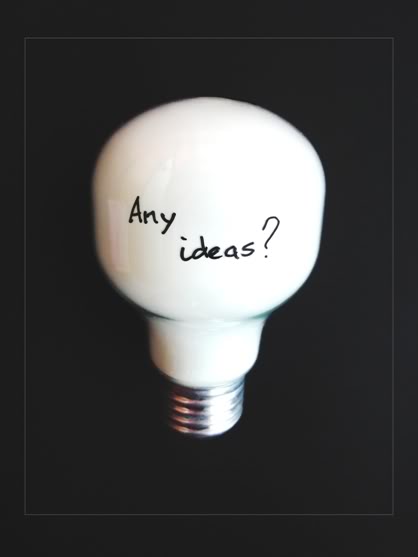Posts Tagged ‘Writing’
How to Communicate Well
Posted on: January 3, 2011
Happy New Year! As you make your business resolutions for the coming year, communicating better is likely on your list. Whether you are an entrepreneur charging forward at the head of a fast-track startup or are growing an established small, midsize or large company, you know that telling your story and getting your message out to your customers and prospects is absolutely vital to your continued success.
With my best wishes to you for a kickin’ and profitable New Year, here are four hot-off-the-press tips that will work wonders for you in 2011.
1. Set Your Objective
Establish an objective to serve as the framework for your communication project. In other words, what is your purpose in reaching out to your customers, a colleague, prospects, your staff, or the general public? What do you want your audience to know, do, think, or feel? What results are you looking to get? From a single letter to an entire advertising campaign in a variety of media, you must know why you are communicating.
Taking aim and knowing what your target is before you take action gives you a real edge over your competition. So don’t bypass the tried-and-true advantage of figuring out where you want to go before you hit the trail: set an objective.
2. Develop Your Strategy
Now that you have an objective, you need a way to get there. The path to your objective is your strategy.
A useful way of thinking about strategy is to ask this question: what achievable steps can I take to reach my objective? In other words …
What is your product, process, idea, and so on? Who are your audiences? How can you engage and hold their interest? What sort of material (white papers, letters, brochures, books, manuals, videos, websites, blogs and other social media, and so on) do you need to create to reach your audiences? What must you say to your audiences to accomplish your objective? What is your point of view? How do you begin to tell your story, make your pitch, start your message to get through to your audiences?
Basically, you can think of strategy as defining the who, what, where, when, and how as specifically as you can. Strategy is your gameplan, and every step must lead to the why, which is your objective.
3. Establish Your Theme
In music, a theme is a pattern of notes that makes the dominant statement at the opening of a composition. After establishing a theme in a piece, the composer develops it and plays with it until the end, when the musical exploration is resolved into a re-statement of the theme.
Communicating by words and images is similar. A good theme lets you own one or several words in the marketplace which are identifiably yours. In this sense, a theme positions or brands your message, that is, it creates “shelf space” in the minds of your audiences.
A theme is the glue that holds your strategy together. If you are spangling messages across market segments and platforms, what is the tie that binds, the unifying element, the cohesive force? Your theme.
You want coherence and organic unity? Grab yourself a dominant theme and stick with it for the project.
4. Create Your Message
Build your message around your theme. The message also must fit within some part of your strategy, so that it helps achieve your objective.
The persuasiveness and effectiveness of a message stem from four factors: what you say, how you say it, where you say it, and how often you say it.
The most important aspect of a message, however, is that you have to write for the audience. Do you know your audience well enough to send them a message they will find meaningful? Will your audience understand your message? Are you using words and images that are relevant and familiar to your audience? Will your message achieve the desired results with your target audience? Is the message appropriate for the medium you have selected, for example, the digital market space, a print magazine, a video or a white paper?

Are you just howling into the wind, or are you on target with an objective, strategy, theme and message set?
What are your thoughts on how to communicate well? Please share them by leaving a comment. Thanks! Elizabeth Lexleigh LexPower The Write Ideas
- In: Tools | Writing Process
- 1 Comment
As we consider all the things for which we can be thankful during the Thanksgiving holiday, writers in every field and genre will give thanks for finding that new idea or a fresh angle on it. Which writer, in passing the cranberry sauce or savoring a bite of pumpkin pie, will not sigh in relief at having tackled a project and successfully wrestled it into a form that delighted a reader, a client or an editor?
As we look beyond the oncoming holidays and over the winter horizon, we writers anticipate our next projects and assignments with pleasure, even as we hope our “idea well” does not run dry.
In the spirit of holiday sharing and giving, then, here are some of the methods I use to keep ideas flowing.
- Practice “stream of consciousness” writing to jog ideas loose.
- Read news websites.
- Read blogs.
- Read and participate in online discussion forums.
- Search a topic, and then visit at least 10 of the sites that appear in the results list.
- Engage in conversation with colleagues.
- Read a wide variety of magazines, newspapers, and other publications.
- Talk with family.
- Talk with friends.
- Read product literature.
- Research a topic formally to learn the details and find out what the experts have to say.
- Read textbooks on the subject.
- Make diagrams as you read, to juxtapose topic points and make new associations.
- Take part in brainstorming sessions.
- Read encyclopedias, dictionaries and thesauruses.
- Make time for meditation.
- Ask yourself random questions, and take notes.
- Write down ideas that pop into your head as you go about other activities.
- Attend seminars and lectures.
- Take one or more classes.
- Look at photos, randomly or categorized by subject.
- Keep a running outline and list every point you want to make as you work through a “big idea.”
- Find out what people want to know about a particular topic.
- Surf the net to “shake it up.”
- Browse through bookstores and libraries – you never know what you’ll run across.
- Practice taking a subject and seeing how many ways you can spin it for niche audiences.
- Get out and about; have experiences, go on adventures and engage in activities.
- Mine your own life experiences: What are your interests? What do you enjoy doing?
- Use “freewriting” to spark ideas: Set a timer for, say, 10 minutes, and then just write. Write anything. Just keep writing until the timer goes off.
- Read your work out loud.
- Find your plinth, and then stand on it. This means establish your subject, or angle on it, and then focus relentlessly on it (especially useful for short pieces).
- Visit “question websites” (writing-prompt generators) to find questions to use as writing prompts.
- Listen to music lyrics from various musical genres to help jump-start your creative engine.
- Keep an idea notebook.
How do you generate ideas and new perspectives on them? What helps you write?
Share your tricks of the trade—we’d all love to hear your story. Thanks! Elizabeth Lexleigh LexPower The Write Ideas




How to Write a First-Rate Diplomatic Cable
Posted by: lexpower on: December 2, 2010
The U.S. Department of State is currently managing the fallout from the unauthorized release of a slew of unencrypted diplomatic cables. All political considerations aside, this post looks at the use of language in diplomacy.
From the sampling I’ve read and heard, the unencrypted diplomatic cables now being splashed onto the world stage seem to cover a rather wide range of topics, from the trivial to the important. Some give first-person accounts of meetings, others offer candid views of allies and world leaders. Some are lighthearted and amusing, others serious and filled with official acronyms, diplo-speak and numbing amounts of often arcane detail.
But let’s leave aside for the moment all political and moral questions involved in the unauthorized release of the cables, as well as any consideration of potential fallout, international distress, or issues of national interest.
Important as those things are, the cables also reveal something else that captured my attention.
As I listened and read, a pattern began to emerge. A common thread seems to run through the cables that are the most interesting from a writing perspective, and that is story.
Yes, it appears (to me at least) that a first-rate diplomatic cable tells a good story.
Grab Attention with a Strong Lead
The most engaging and memorable cables open with a strong lead sentence. They grab the reader’s attention by making a strong point right up front.
A good opening lead shows the writer comprehends the issue at hand, has a purpose in mind, knows who the audience is, and understands how to write for that audience.
Tell the Story
In the well-written cables, the author then proceeds to elaborate on the initial idea in the lead sentence by telling a lively and vivid story. The best of these are fairly short, punchy and use memorable, descriptive language to get the point across.
Once the writer has established the subject in the lead sentence, everything in the story must support and explain it. You can spot a lack of unity by looking for information that is not relevant to the lead sentence.
Wrap It Up
The author closes by stating any supporting details, data or technical information.
In some cases, there may be a call to action or a formal concluding statement.
Now, if the government had stored those cables in encrypted form, writers the world over would never have had the chance to appreciate how nicely written many of them are.
Before you leave … share your thoughts in a comment. Have you read any of the diplomatic cables? Did you notice anything about the writing, or how they were constructed? What is your opinion? Elizabeth Lexleigh LexPower The Write Ideas